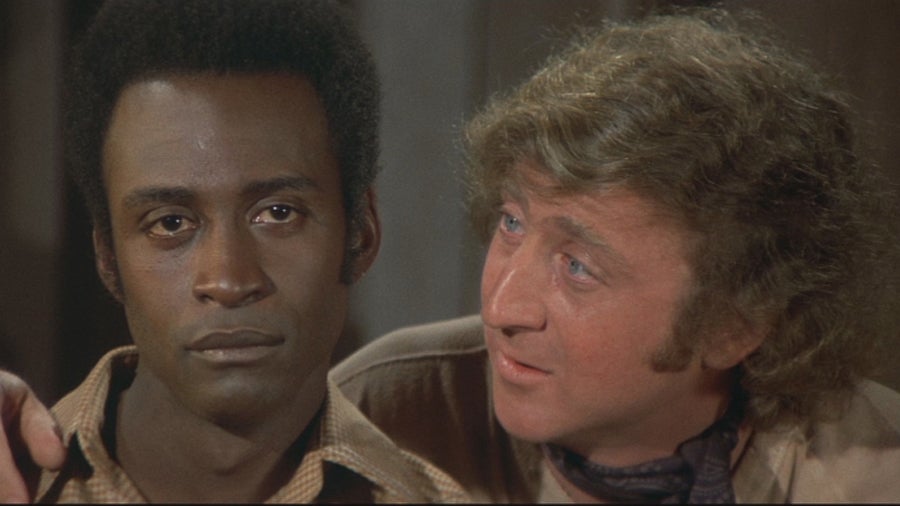Why we need ‘Blazing Saddles’ now more than ever

Cleavon Little and Gene Wilder are shown in this still image from the 1974 Warner Bros. film 'Blazing Saddles.'
Mel Brooks’ takedown of racism in America, the 1974 film “Blazing Saddles,” is still relevant and funny as hell thanks to its empowering lead character. Ironically, the film could not be made today.
Mel Brooks’ takedown of racism in America, the 1974 film “Blazing Saddles,” is still relevant and funny as hell thanks to its empowering lead character. Ironically, 42 years later, the film about a black sheriff who takes on a ruthless gang of thugs (and racial prejudice) to protect a small town in the Wild West could not be made today. Even Brooks, himself, agrees that it was a story that pushed the limits of comedy.
“It was not easy to get this picture made,” Brooks told a packed house at the Academy of Music this past weekend. “I said, ‘Let’s write the hell out of this, because it’s never going to be seen!'”
Brooks wrote the script with a copyright lawyer and a dentist (Norman Steinberg and Alan Uger, respectively) who had decided to try their hands at screenwriting; Andrew Bergman, who wrote the original story outline; and the legendary comedian and loose cannon Richard Pryor. And miraculously, Warner Bros. not only gave the script the go-ahead to be produced, but the studio left Brooks and company pretty much alone until the film premiered.
A new leading man for mainstream America
By 1974, moviegoers had already been introduced to Sidney Poitier through “In the Heat of the Night” and “Guess Who’s Coming to Dinner,” and Blaxploitation films like “Shaft” and “Superfly” were a hit with black audiences, but black leading men were still scarce on the silver screen.
For “Blazing Saddles,” Brooks had his heart set on hiring co-writer Richard Pryor to play the lead role of Sheriff Bart, but in one of its few production interventions, Warner Bros. refused his choice. Pryor’s criminal record and drug problems would prevent the studio from getting insurance for the production.
Enter Cleavon Little, who Brooks calls a “handsome, sophisticated actor,” who had extensive experience acting in theater and on television. Sheriff Bart was his first lead role in a motion picture, and despite being released the same year as “The Godfather: Part II” and “Chinatown,” “Blazing Saddles” went on to become the highest grossing film of 1974.
With his acting chops and memorable dialogue, Little proved that a black actor could hold his own as the leading man and appeal to (predominantly white) audiences. Without Cleavon Little, there would be no Kevin Hart, Will Smith, or Eddie Murphy.
Defeating hatred through comedy
Location and lead actor aside, “Blazing Saddles” is a continuation of a formula Brooks employed in his breakout 1968 hit “The Producers”: take the wind out of evil’s sails by turning it into a punch line.
While “The Producers” took aim at Hitler and the Nazis, “Blazing Saddles” targeted racism in America. Taking on racism also meant using racial epithets, which was a constant source of anxiety for Brooks. But co-writer Richard Pryor insisted that the language was necessary to tell the story.
“He would give his permission [to use] the N-word everywhere,” Brooks said.
But Brooks would not have been able to pull off the many uses of the word, or indeed any of the racially-charged humor, had it not been set against the backdrop of a Western film. The costumes, the sets, and the musical score all lent legitimacy to the story, which made it easier to expose the ridiculous backwards thinking that is born out of racism.
This idea is particularly evident toward the end of the film, when the all-white citizens of Rock Ridge must decide between granting equal rights and land to the African American and Asian railroad workers who could help them save their town, or allowing their prejudice to prevent them from uniting against a common enemy who could destroy them all. At last, a town leader relents.
“Alright, we’ll give some land to the niggers and the chinks,” he says. “But we don’t want the Irish!”
Hard to imagine a line like that being included in a 2016 feature film, yet it reveals the twisted logic that comes from embracing an “us versus them” mindset.
In a past interview, Brooks had described why humor was the best weapon to defeat perpetrators of hateful ideologies.
“You can’t get on a soapbox with these orators, because they’re very good at convincing the masses they’re right. But if you can make them look ridiculous, then you can win over the people.”
A beautiful sentiment to behold, Mel.
WHYY is your source for fact-based, in-depth journalism and information. As a nonprofit organization, we rely on financial support from readers like you. Please give today.

